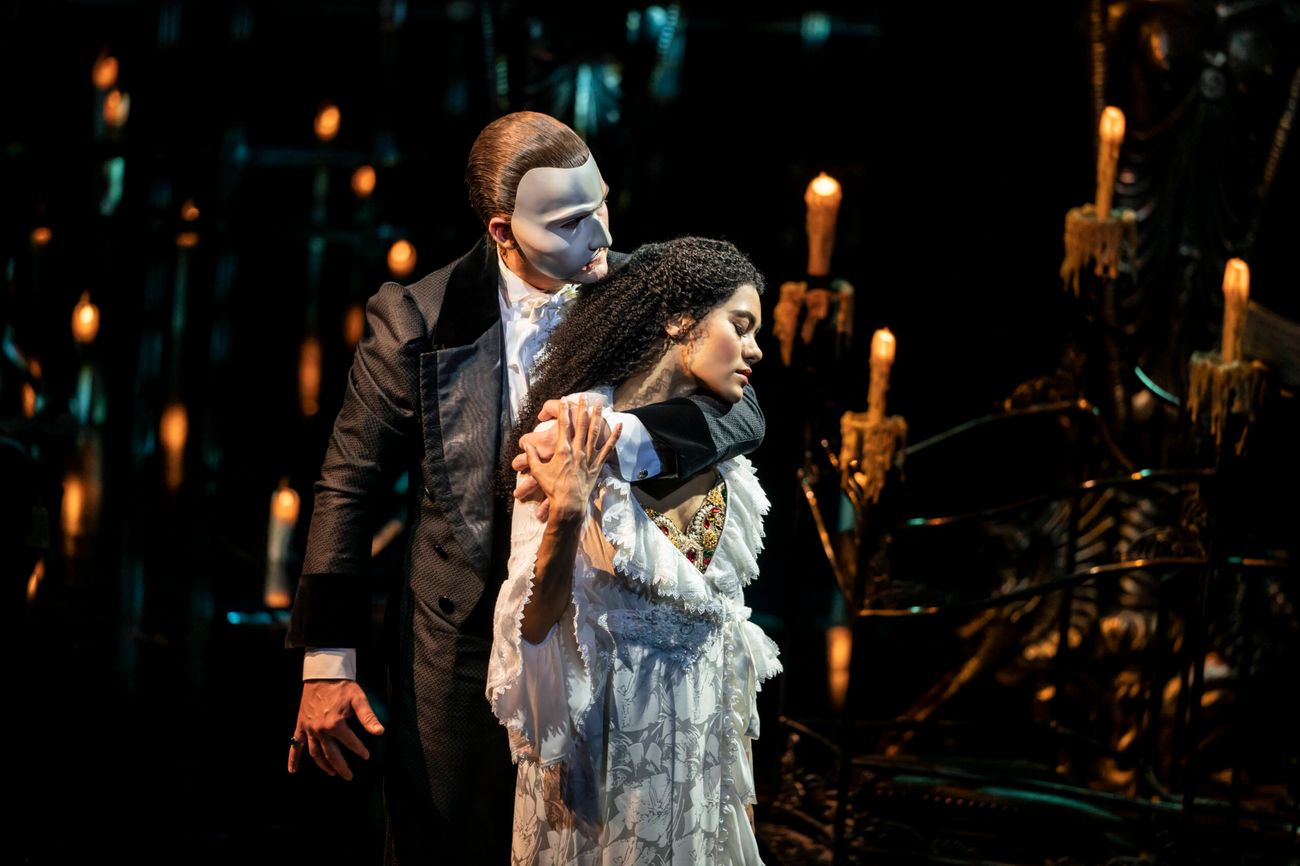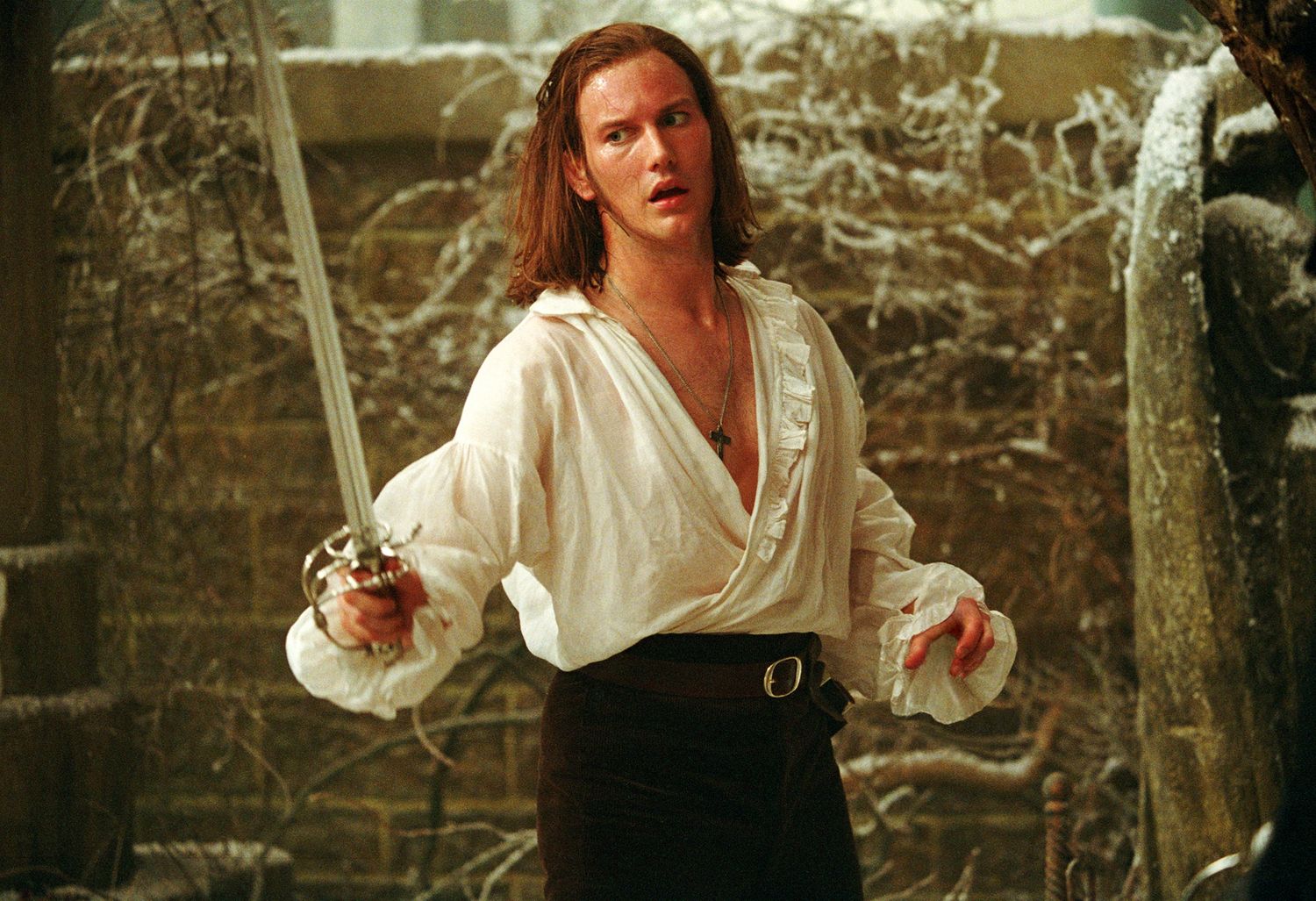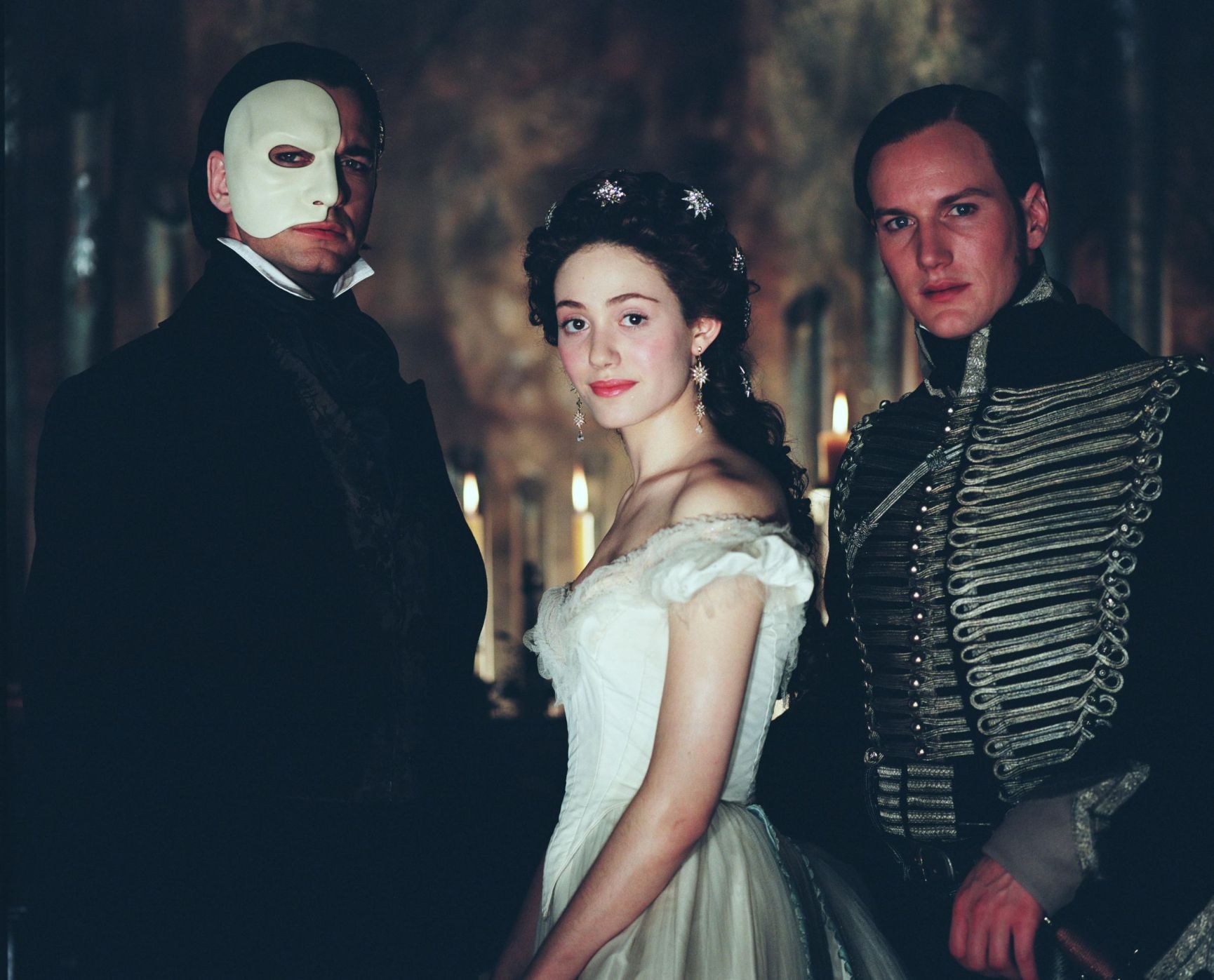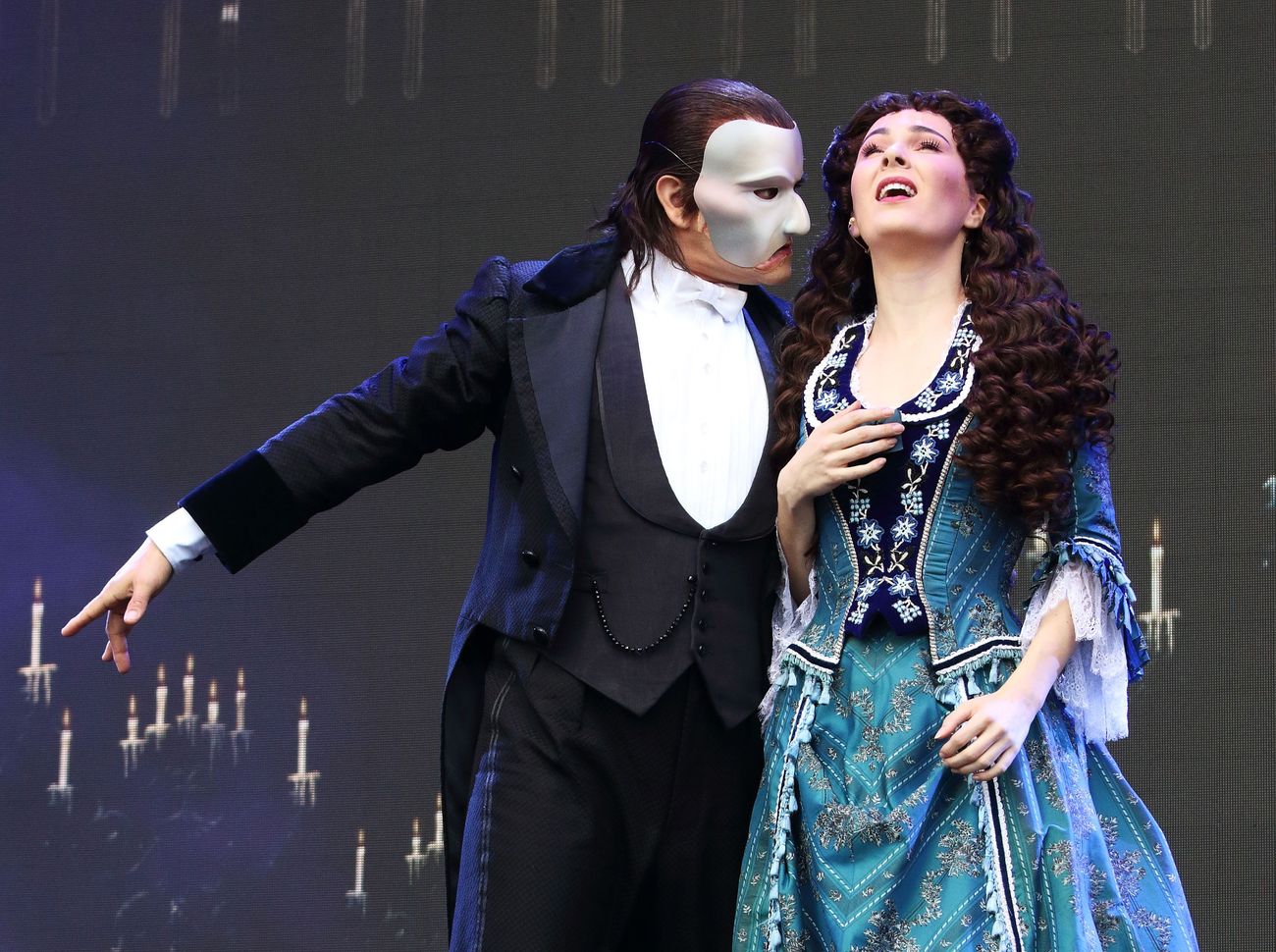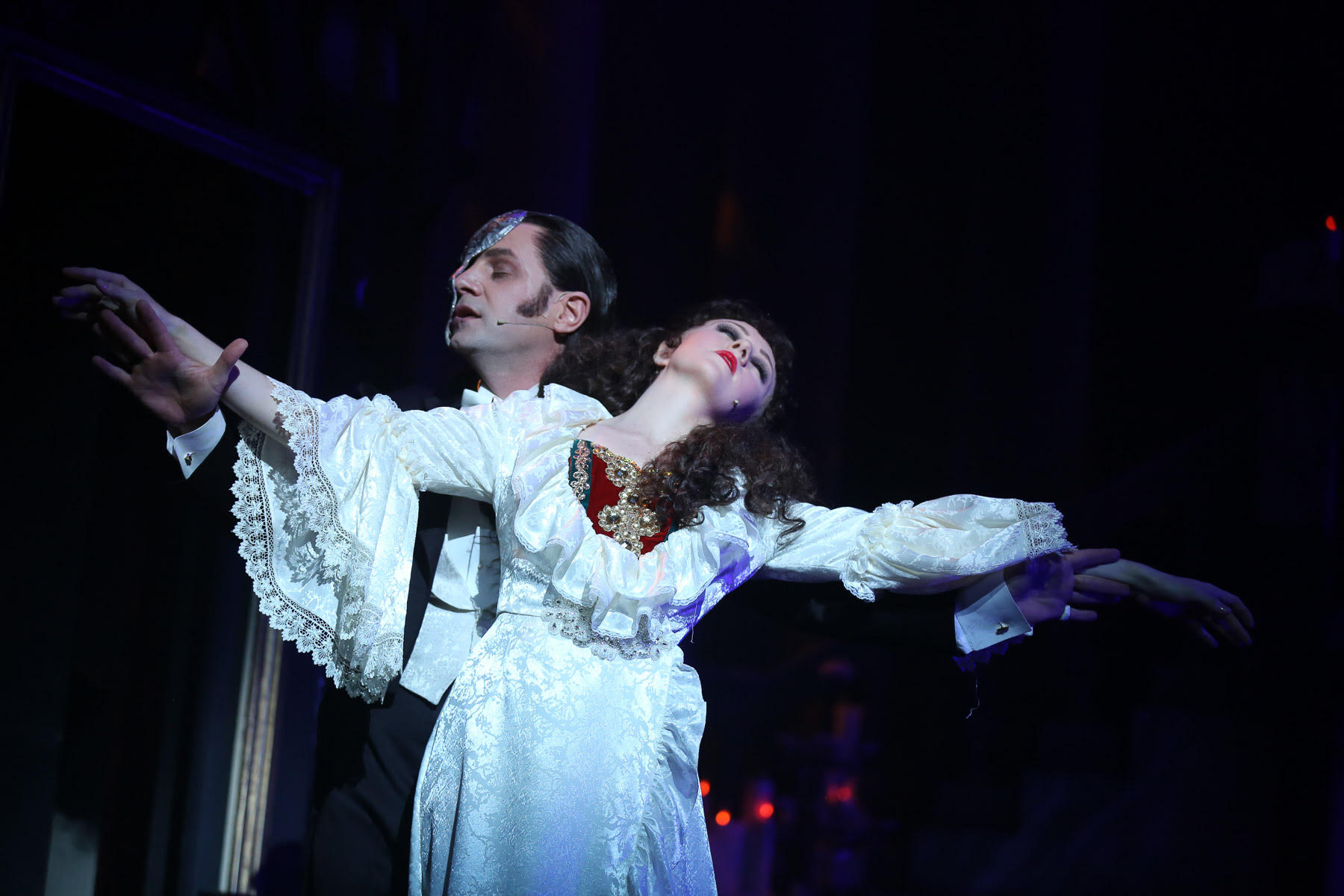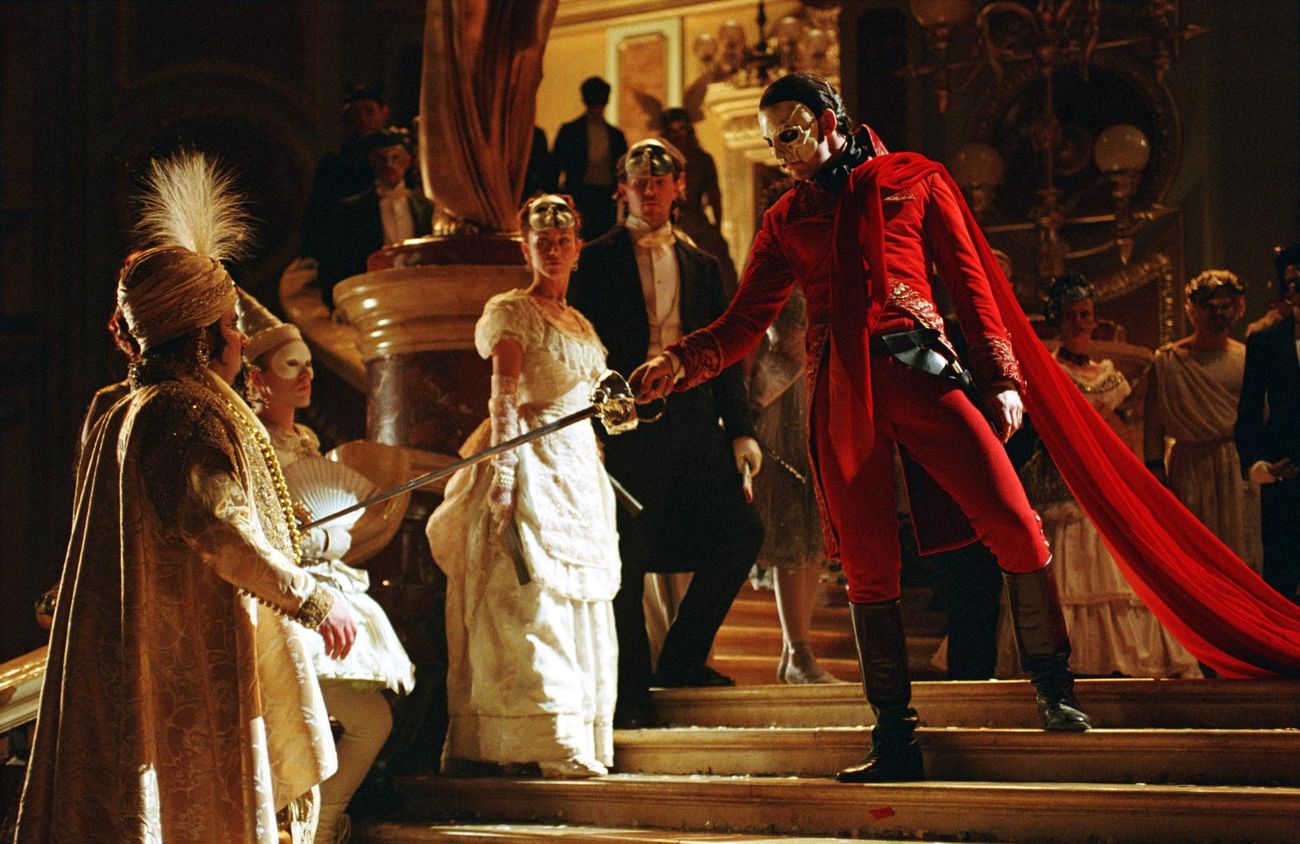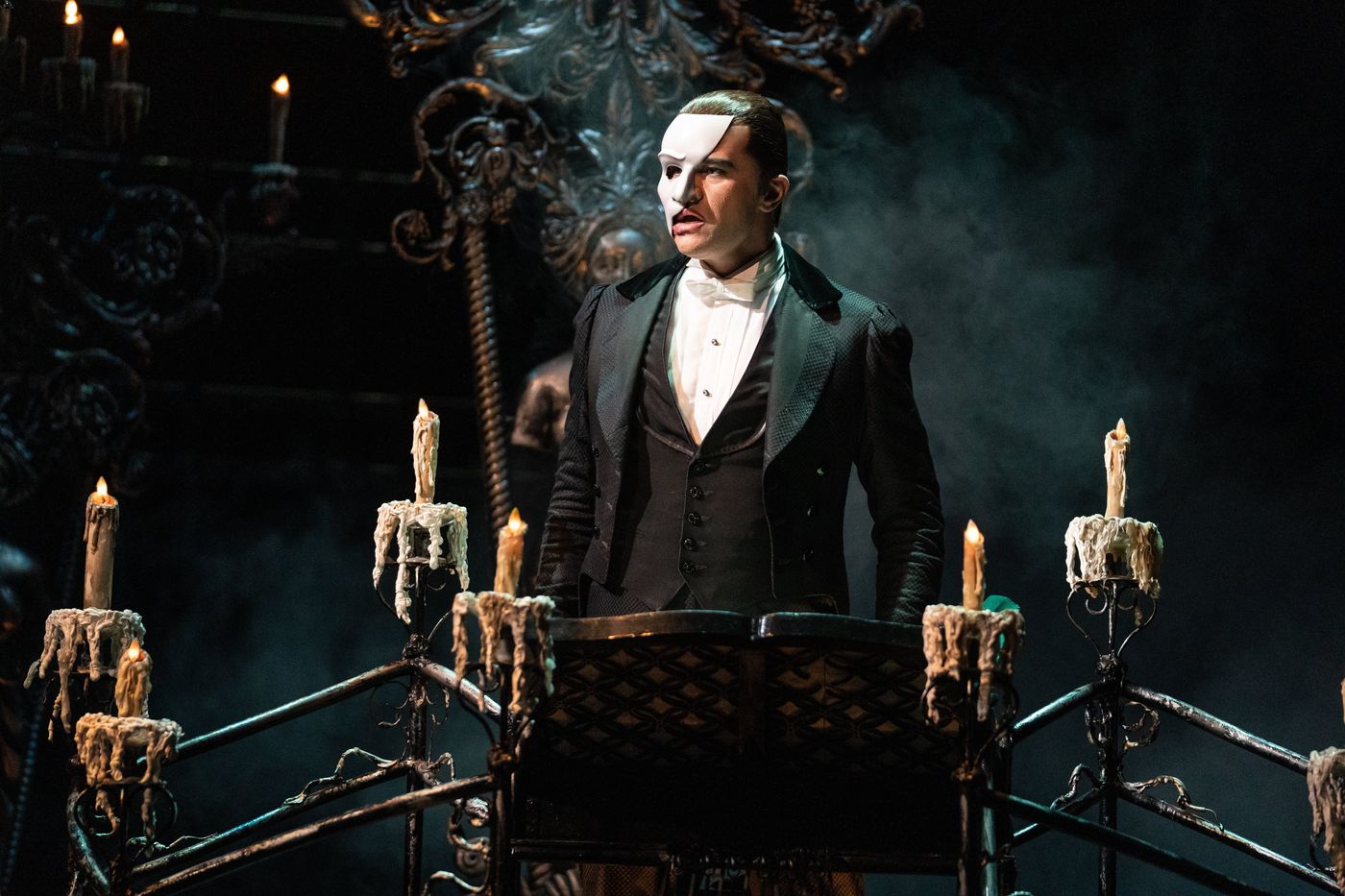Home>Events & Info>Opera>Which Famous Theater Inspired The Phantom Of The Opera
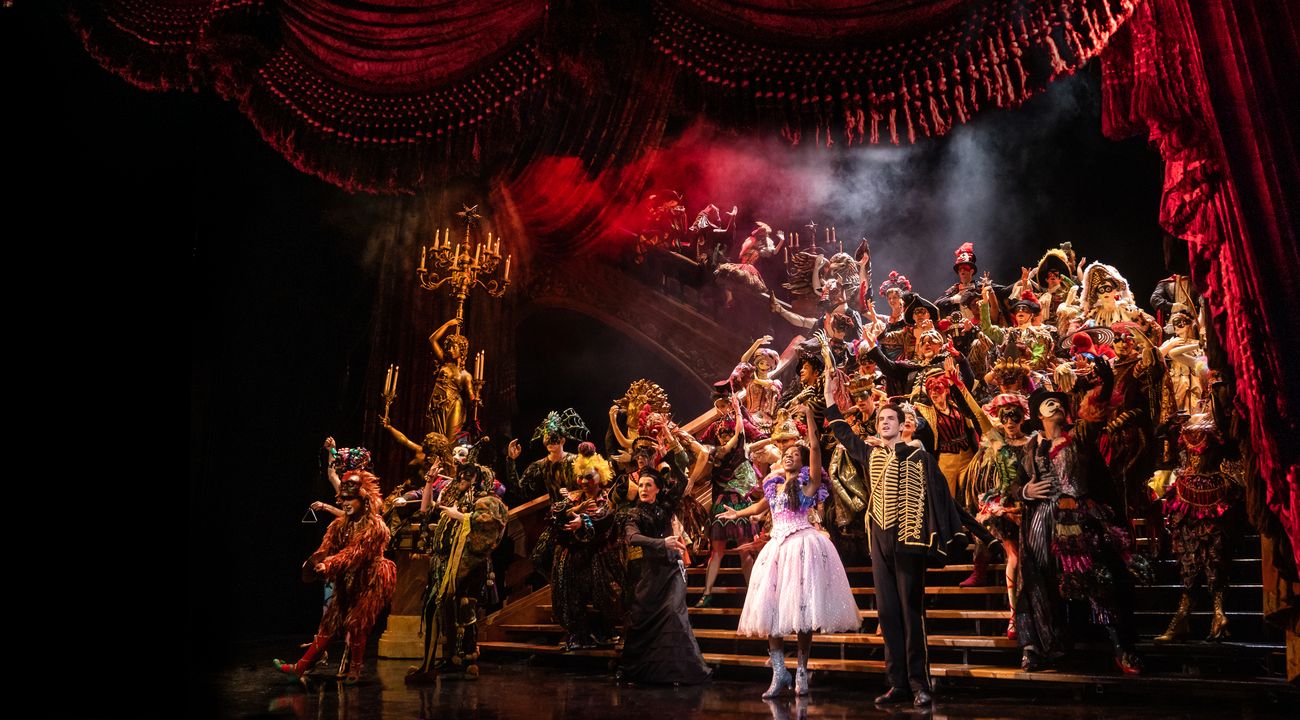

Opera
Which Famous Theater Inspired The Phantom Of The Opera
Modified: January 22, 2024
Explore the iconic theater that served as the inspiration for the haunting tale of "The Phantom of the Opera." Discover the secrets and history behind this legendary opera house.
(Many of the links in this article redirect to a specific reviewed product. Your purchase of these products through affiliate links helps to generate commission for AudioLover.com, at no extra cost. Learn more)
Table of Contents
- Introduction:
- Origins of The Phantom of the Opera:
- The Inspiration behind the Story:
- The Haunted Theaters of Paris:
- The Palais Garnier: A Jewel of French Architecture
- The Paris Opera House: Setting the Stage
- The Mystery and Intrigue of the Palais Garnier
- Gaston Leroux’s Connection to the Palais Garnier
- Unveiling the Identity of the Real-Life Phantom
- The Influence of the Palais Garnier on the Novel and Musical
- Conclusion
Introduction:
Considered one of the greatest theatrical spectacles of all time, “The Phantom of the Opera” is a timeless masterpiece that has captivated audiences around the world. The haunting melodies, mesmerizing performances, and tragic love story have made it an enduring favorite. But have you ever wondered where the inspiration for this iconic tale came from?
In this article, we will delve into the origins of “The Phantom of the Opera” and explore the famous theater that served as the muse for this haunting story. Prepare to embark on a journey through the history of one of the most celebrated works of musical theater and discover the secrets behind its creation.
From the labyrinthine corridors to the grand auditoriums, we will unravel the mystery behind the setting of the novel and subsequent musical adaptations. Get ready to immerse yourself in the world of the Paris Opera House and uncover the truth behind the phantom that haunts its halls.
Join us as we venture back in time to the opulent and captivating era of 19th-century Paris and discover the real-life theater that inspired the tale of “The Phantom of the Opera.”
Origins of The Phantom of the Opera:
The Phantom of the Opera” originated as a gothic romance novel written by French author Gaston Leroux in 1910. Leroux was a journalist turned novelist, known for his detective stories and adventure novels.
The inspiration for the novel was drawn from several sources, including real-life events and legends surrounding the Paris Opera House. Leroux was intrigued by the rumors and tales of a phantom-like figure that supposedly haunted the opera house during the late 19th century.
One of the key sources of inspiration for Leroux was the story of a chandelier accident at the Palais Garnier. It was said that a chandelier had fallen from the ceiling, killing a construction worker and sparking speculation of supernatural involvement. This incident, along with other mysterious occurrences, laid the foundation for the haunting atmosphere that Leroux would later bring to life in his novel.
Additionally, Leroux drew inspiration from another fictional work, “Trilby” by George du Maurier. The character of Svengali in “Trilby” shares some similarities with the character of the phantom in “The Phantom of the Opera.” Both characters possess hypnotic powers and exert control over others.
Combining elements of real-life events, urban legends, and literary influences, Leroux crafted a gripping story that captured the imagination of readers. However, it was the subsequent adaptations of the novel, particularly Andrew Lloyd Webber’s musical, that catapulted “The Phantom of the Opera” to global fame and recognition.
Next, let’s explore the theater that served as the backdrop for Leroux’s novel and the subsequent adaptations of “The Phantom of the Opera.” Join us as we venture into the world of the haunted theaters of Paris and uncover the secrets of the Palais Garnier.
The Inspiration behind the Story:
The inspiration behind “The Phantom of the Opera” stems from a combination of real-life events, legends, and the vivid imagination of Gaston Leroux. The tale of a mysterious and disfigured figure lurking in the shadows of a grand theater captured the fascination of readers and theatergoers alike.
One of the key inspirations for the story was the Paris Opera House, renowned for its stunning architecture and decadent interior. Nestled in the heart of Paris, the opera house provided the perfect setting for a tale of mystery and intrigue.
Leroux was captivated by the notion of a hidden, secret world beneath the opera house, with hidden passageways and forgotten chambers. This fascination led to the creation of the phantom’s lair, a labyrinthine underground maze where he lurked in secrecy.
Another inspiration came from the legends and rumors of a ghostly presence that haunted the theater. Tales of unexplained events, such as falling chandeliers and strange noises, stirred the imagination and added an air of supernatural mystery to the story.
Leroux also drew inspiration from the concept of the dual nature of humanity, exploring themes of beauty and ugliness, love and obsession. The character of the phantom embodies this duality, with his disfigured face and tragic past contrasting with his musical genius and desire for love and acceptance.
The love story between the phantom and the young opera singer, Christine Daaé, also played a crucial role in the inspiration behind the story. Leroux explored the themes of unrequited love, sacrifice, and the power of music as a means of emotional expression.
Furthermore, Leroux’s background as a journalist and his fascination with crime and mystery provided him with the skills to create a gripping narrative. He expertly weaved together elements of suspense, romance, and intrigue to create a story that continues to captivate audiences to this day.
In the next section, we will dive into the haunting theaters of Paris and the role they played in shaping the narrative of “The Phantom of the Opera.” Join us as we explore the grandeur and mystery of the Palais Garnier, the theater that became synonymous with the phantom’s ghostly presence.
The Haunted Theaters of Paris:
Paris, often referred to as the “City of Light,” has a rich history of theater and artistic expression. Within its bustling streets, there are several theaters that have become legendary for their mysterious and supernatural occurrences. These haunted theaters provided the perfect inspiration for Gaston Leroux’s “The Phantom of the Opera.”
One of the most famous of these haunted theaters is the Palais Garnier. Located in the heart of Paris, this architectural masterpiece has captivated audiences for over a century. It was completed in 1875 and quickly became a symbol of the opulence and grandeur of the Parisian arts scene.
However, behind its beautiful façade lies a history steeped in mystery and intrigue. Rumors of ghostly encounters and unexplained phenomena have persisted for years, creating an atmosphere of eerie fascination.
The Palais Garnier is known for its subterranean labyrinth of catacombs, which became the inspiration for the phantom’s secret lair in Leroux’s novel. The dark and winding corridors, lined with skulls, add to the haunting allure of the theater.
In addition to the Palais Garnier, there are other theaters in Paris associated with supernatural occurrences. The Théâtre de la Porte Saint-Martin, for instance, is rumored to be haunted by the ghost of a famous actress who died during a performance.
Another legendary theater is the Théâtre du Grand-Guignol, known for its macabre and intense performances. This theater gained a reputation for staging graphic and terrifying plays, often accompanied by special effects that left audiences trembling in fear.
These haunted theaters of Paris provided the perfect backdrop for Leroux’s tale of mystery and the supernatural. The intertwining of real-life ghost stories and legends with the imagination of the author created a captivating atmosphere that continues to enthral audiences worldwide.
Next, let’s dive deeper into the Palais Garnier and explore its architectural splendor and the role it played in the creation of “The Phantom of the Opera.”
The Palais Garnier: A Jewel of French Architecture
The Palais Garnier is a true gem of French architecture, renowned for its grandeur and opulence. Located in the heart of Paris, this historic theater is a testament to the creativity and architectural mastery of the 19th century.
Designed by Charles Garnier and completed in 1875, the Palais Garnier is a prime example of the Beaux-Arts architectural style. The exterior of the building is adorned with intricate carvings, majestic columns, and a stunning blend of classical and Baroque elements.
As you walk through the entrance, you are immediately transported to a world of splendor and elegance. The grand staircase, with its majestic marble balustrades and gilded statues, sets the stage for the lavish interior that lies beyond.
Inside the Palais Garnier, the auditorium is an awe-inspiring sight to behold. The sparkling chandelier, which famously crashes to the stage in Leroux’s novel, dominates the space, illuminating the plush red velvet seating and gilded decorations.
The ceiling of the auditorium, famously painted by Marc Chagall in the 1960s, depicts scenes from famous operas and adds a touch of modern artistry to the historic space. This amalgamation of classical and contemporary elements represents the evolution and enduring beauty of the Palais Garnier.
Beneath the surface, the theater houses an intricate network of corridors, rooms, and hidden chambers. These underground spaces, known as the catacombs, have inspired countless tales and legends surrounding the opera house.
The Palais Garnier’s architectural grandeur and its intriguing subterranean world provided the perfect backdrop for Gaston Leroux’s “The Phantom of the Opera.” It is within the depths of these catacombs that the phantom finds solace, concealing his true identity and orchestrating his haunting presence in the theater.
Today, the Palais Garnier stands as a symbol of Parisian cultural heritage, hosting world-class ballet and opera performances. Its exquisite design and rich history continue to captivate visitors from around the globe, drawing them into the enchanting world of theater and the phantom’s enduring legacy.
In the next section, we will explore the Paris Opera House, the setting for “The Phantom of the Opera,” and delve into the mystery and allure that surrounds this illustrious institution.
The Paris Opera House: Setting the Stage
The Paris Opera House, also known as the Opéra de Paris or simply the Opera Garnier, serves as the iconic setting for Gaston Leroux’s “The Phantom of the Opera.” This renowned institution has played a significant role in the history of French culture and continues to be a symbol of grandeur and artistic excellence.
The Opera House, located in the 9th arrondissement of Paris, was officially inaugurated in 1875 and quickly became a centerpiece of the city’s vibrant arts scene. It was designed by architect Charles Garnier, who won a competition to create a new opera house for Paris.
The exterior of the Paris Opera House is stunning, with its Beaux-Arts style showcasing intricate carvings, majestic domes, and ornate sculptures. It exudes a sense of grandiosity and sets the stage for the elegance and drama that unfolds within its walls.
Stepping inside the Opera House, visitors are transported to a world of splendor and luxury. The interior is a feast for the eyes, with its sweeping staircases, gilded balconies, and lavish decorations. The main auditorium, with its plush red velvet seats and exquisite chandeliers, is a sight to behold.
It is in this opulent setting that the events of “The Phantom of the Opera” take place. The grandeur and enchantment of the Opera House serve as the perfect backdrop for the tragic tale of the phantom and his obsession with the young opera singer, Christine Daaé.
Throughout the story, Leroux weaves vivid descriptions of the Opera House, capturing the atmosphere of rehearsals, performances, and the bustling backstage area. The reader is immersed in the world of the theater, experiencing the anticipation and emotions that come with each production.
The Paris Opera House also becomes a character in its own right, with its hidden passageways, secret chambers, and rich history. The phantom’s presence in the Opera House is shrouded in mystery, and the building becomes a labyrinth of intrigue and suspense.
To this day, the Paris Opera House continues to be a leading venue for opera and ballet performances. Its iconic status and the allure of its history have drawn audiences from around the world who come to witness the magic of the stage.
As we delve deeper into the story of “The Phantom of the Opera,” we will uncover the mystery and intrigue that surrounds this legendary institution. Join us as we unravel the connection between the Paris Opera House and the haunting tale that has captivated audiences for generations.
The Mystery and Intrigue of the Palais Garnier
The Palais Garnier, with its stunning architecture and rich history, exudes an air of mystery and intrigue that has captivated audiences for decades. It is within the walls of this iconic theater that the haunting tale of “The Phantom of the Opera” unfolds, heightening the allure and fascination surrounding the Palais Garnier.
One of the key elements contributing to the mystique of the Palais Garnier is its hidden underground catacombs. These labyrinthine passageways and chambers beneath the theater have ignited imaginations and inspired countless legends and rumors.
Stories of secret passages, forgotten rooms, and ghostly encounters have been woven into the fabric of the Palais Garnier’s history. It is said that these catacombs served as inspiration for Gaston Leroux’s phantom’s lair, a secret refuge for the enigmatic character and the setting for his haunting presence.
Adding to the intrigue are the tales of sightings and encounters with the ghostly figure believed to be the phantom himself. Visitors and staff have reported mysterious and unexplained phenomena, from inexplicable noises to phantom voices echoing through empty corridors.
The Palais Garnier’s association with the supernatural is not limited to the phantom. The chandelier incident, depicted in Leroux’s novel and subsequent adaptations, further adds to the enigmatic atmosphere of the theater.
Legend has it that during a performance, a chandelier mysteriously fell from the ceiling, causing chaos and panic among the audience. While the true cause of the accident was likely a faulty counterweight, the event perpetuated the belief in a ghostly presence haunting the Palais Garnier.
These tales of mystery and intrigue have solidified the Palais Garnier’s reputation as a theater of secrets and shadows. The allure of the unknown draws visitors who are eager to uncover the truth behind the legends and immerse themselves in the history and beauty of this iconic institution.
Today, visitors can explore the Palais Garnier through guided tours, discovering the fascinating stories and hidden corners of this architectural marvel. As they tread the same halls and descend into the catacombs, they can’t help but feel the lingering presence of the phantom and the sense of wonder that pervades the Palais Garnier.
Next, we will uncover the connections between Gaston Leroux and the Palais Garnier, shedding light on the inspiration and influence that shaped “The Phantom of the Opera.”
Gaston Leroux’s Connection to the Palais Garnier
Gaston Leroux, the author of “The Phantom of the Opera,” had a personal connection to the Palais Garnier that played a significant role in the creation of his iconic novel. As a journalist and writer, Leroux was given access to the inner workings of the theater, allowing him to delve into its mysteries and shape his narrative.
Leroux’s fascination with the Palais Garnier began during his time as a court reporter. He was assigned to cover criminal trials, which led him to explore the labyrinthine corridors and hidden chambers of the theater, notorious for their connection to the criminal justice system at the time.
It was through these experiences that Leroux discovered the secrets and hidden lore surrounding the Palais Garnier. He became familiar with the ghostly legends and the stories of unexplained phenomena that had captured the imaginations of theatergoers and staff.
Intrigued by these tales, Leroux saw an opportunity to weave a captivating story, blending real-life events with his own imagination. Drawing on his intimate knowledge of the theater’s layout and inner workings, he incorporated the catacombs, secret passages, and backstage areas into the plot of “The Phantom of the Opera.”
Furthermore, Leroux’s exploration of the Palais Garnier allowed him to imbue his narrative with a sense of authenticity. The vivid descriptions of the theater’s architecture, the bustling rehearsals, and the grand performances were rooted in his own observations and experiences, lending a realistic touch to the story.
Leroux’s connection to the Palais Garnier as a journalist and his deep understanding of its secrets and history undoubtedly influenced his portrayal of the phantom’s lair and the phantom’s influence on the theater.
In the heart of the Palais Garnier, Leroux found the perfect backdrop for his tale of love, obsession, and the interplay between beauty and darkness. The setting became a character in itself, adding depth and atmosphere to the narrative.
Today, the legacy of Gaston Leroux’s connection to the Palais Garnier lives on through the enduring popularity of “The Phantom of the Opera.” The novel has inspired numerous adaptations, including Andrew Lloyd Webber’s iconic musical, further cementing the Palais Garnier’s association with this captivating tale.
In the following section, we will unravel the mystery behind the true identity of the real-life phantom who roamed the Palais Garnier and explore the parallels between fiction and reality.
Unveiling the Identity of the Real-Life Phantom
One of the enduring mysteries surrounding “The Phantom of the Opera” is the question of whether the character of the phantom was based on a real person. While the novel is a work of fiction, there are common accounts of a real-life figure who allegedly haunted the Palais Garnier during the 19th century.
According to historical records, a man named Erik, often referred to as “The Phantom,” was rumored to have existed and frequented the Palais Garnier. Descriptions of Erik align with the character portrayed by Gaston Leroux, depicting a disfigured individual with exceptional musical talent.
Erik was said to be a master architect and illusionist who possessed an intricate knowledge of the Palais Garnier’s secret passageways and hidden chambers. He reportedly had a profound influence on the theater, orchestrating strange occurrences and exerting control behind the scenes.
Although historical evidence of Erik’s existence is scarce and shrouded in ambiguity, the legends and oral accounts that circulated during the time of the Palais Garnier’s construction and early years contributed to the enduring fascination surrounding the phantom’s story.
It is important to note that while there may not be concrete evidence to support the existence of a real-life phantom, the tales and rumors served as inspiration for Gaston Leroux’s novel. Through his own imagination and the influence of the Palais Garnier’s haunted reputation, he brought the phantom to life on the pages of his book.
Regardless of whether the real-life phantom truly existed, his mythos continues to enchant audiences and perpetuate the allure surrounding the Palais Garnier. The notion of a tormented outcast lurking in the shadows of an iconic theater has captured the collective imagination and cemented the Palais Garnier’s status as a place of mystery and intrigue.
Continuing our exploration, let us now delve into the profound influence of the Palais Garnier on Leroux’s novel and subsequent adaptations, and how this architectural wonder has become synonymous with “The Phantom of the Opera.”
The Influence of the Palais Garnier on the Novel and Musical
The Palais Garnier, with its grandeur and haunting ambiance, served as a profound influence on Gaston Leroux’s novel and Andrew Lloyd Webber’s musical adaptation of “The Phantom of the Opera.” The iconic theater became more than just a setting; it became a character in itself, shaping the narrative and immersing audiences in its mysterious allure.
Leroux’s intimate knowledge of the Palais Garnier, coupled with the legends and rumors surrounding the theater, inspired the creation of the phantom’s lair and the various hidden chambers depicted in the novel. The catacombs beneath the Palais Garnier became an intricate part of the phantom’s world, adding layers of intrigue and danger to the story.
In the musical adaptation, the Palais Garnier’s architectural brilliance is vividly brought to life on stage. From the sweeping stairs to the ornate opera boxes and the iconic chandelier, the set design pays homage to the opulence and grandeur of the Palais Garnier, playing a vital role in transporting the audience into the heart of the story.
The influence of the Palais Garnier extends beyond the physical aspects of the theater. The atmosphere and ambiance of the Palais Garnier – the sense of mystery, the darkness, and the supernatural elements – are deeply ingrained in both the novel and the musical.
Add to that the Palais Garnier’s association with music and performance, and you have the perfect backdrop for the tragic love story between the phantom and Christine. The grandeur of the theater serves as a stark contrast to the hidden and twisted world of the phantom, amplifying the emotions and tension within the narrative.
Additionally, the Palais Garnier’s connection to real-life events and legends added an extra layer of authenticity to Leroux’s novel. The tales of unexplained occurrences and the legends of a ghostly figure roaming the theater further captivated readers and audiences, lending an air of realism to the story.
Andrew Lloyd Webber’s musical adaptation took the influence of the Palais Garnier to new heights, transforming the stage into a captivating representation of the iconic theater. The music, lyrics, and visually stunning sets pay homage to the grandeur and mystique of the Palais Garnier, making it an inseparable part of the production’s identity.
Through the Palais Garnier, both the novel and the musical capture the imagination and transport audiences into a world where reality and fantasy intertwine. The influence of this architectural marvel continues to resonate, cementing the Palais Garnier as an essential element of “The Phantom of the Opera” and forever entwined with the iconic story.
As we conclude our exploration, we invite you to embrace the magic and mystique of the Palais Garnier and immerse yourself in its rich history and the enduring legacy of “The Phantom of the Opera.”
Conclusion
The Palais Garnier, with its haunting beauty and rich history, has left an indelible mark on the world of theater, literature, and music through its influence on “The Phantom of the Opera.” Gaston Leroux’s novel and Andrew Lloyd Webber’s musical adaptation have brought the mystique of this iconic theater to audiences worldwide, captivating hearts and imaginations.
From the inspiration drawn from the legends and rumors surrounding the Palais Garnier to the meticulous depiction of its stunning architecture and hidden passages, the theater serves as the perfect backdrop for the tragic tale of the phantom and his obsession with Christine Daaé.
The allure of the real-life Palais Garnier, its grandiosity, its connection to the supernatural, and the enigmatic legends associated with it laid the foundation for the haunting atmosphere that permeates the story. The catacombs, chandeliers, and stage sets created a world where love, music, and darkness intertwine, captivating audiences with a sense of wonder and mystery.
The Palais Garnier remains a symbol of artistic expression and cultural heritage, continuing to host exceptional performances that showcase its architectural brilliance. The theater’s association with “The Phantom of the Opera” has perpetuated its allure, drawing visitors who are eager to uncover the secrets of this mystical place.
As we journeyed through the origins of “The Phantom of the Opera,” explored the haunted theaters of Paris, and discovered the influence of the Palais Garnier, we have delved into a world where fantasy and reality intertwine, where music and drama unfold in the grandest of stages.
The legacy of “The Phantom of the Opera” and its connection to the Palais Garnier remind us of the enduring power of art to captivate, inspire, and evoke emotions. It serves as a testament to the magic that can be found within the walls of a theater and the remarkable stories that can emerge from its depths.
So, let us embrace the enchantment of the Palais Garnier, the mesmerizing melodies of “The Phantom of the Opera,” and the timeless allure of this captivating tale, as we immerse ourselves in the haunting grandeur of one of the world’s most beloved works of fiction and the theater that inspired it.

